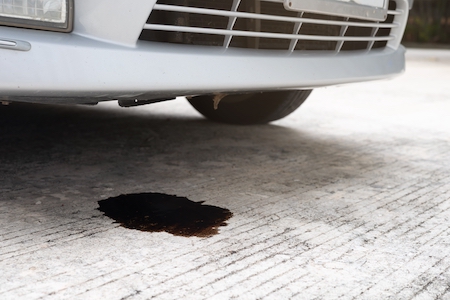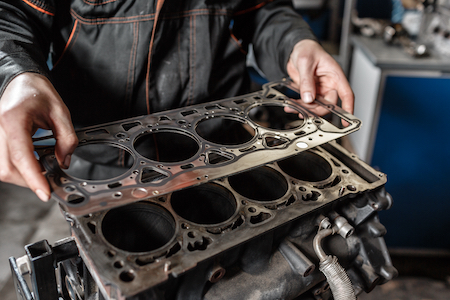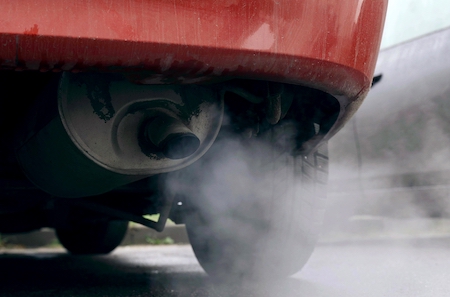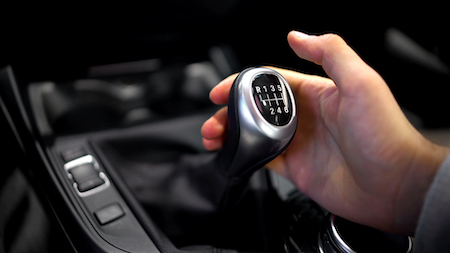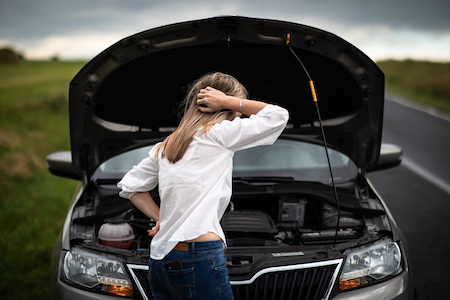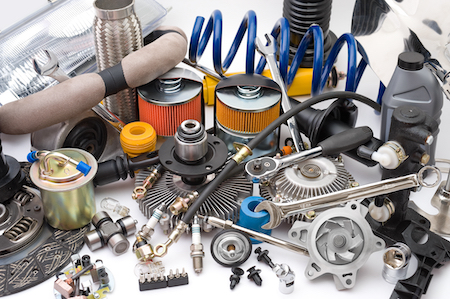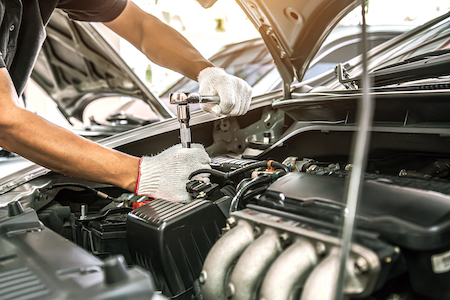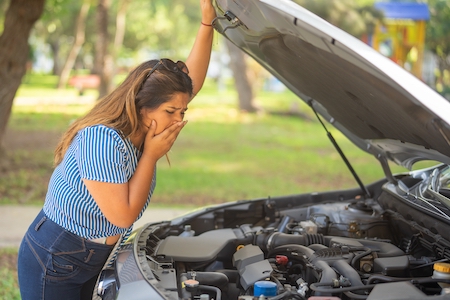Heading out onto the open road is always an exciting experience. You’re dreaming about your final destination. You have work chores in mind, ticking things off to complete during your busy day ahead.
What you’re not prepared for is car trouble. If you’re having car engine performance issues, your entire day may be spent dealing with the problem.
Owning a car comes with its fair share of joys and challenges, and one of the most frustrating challenges is when your car’s engine isn’t performing as it should. But fear not! We can help you troubleshoot the most common engine performance issues.
The Engine Won’t Start
Picture this: you’re ready to head out for an important meeting or a long-awaited road trip, and your car refuses to start. Don’t panic! Start by checking the basics.
Are your lights, radio, and other electrical components working? If they are, then your battery is likely not the issue. If they’re not working, a dead battery might be the culprit, and jump-starting your car could do the trick.
If the battery isn’t the issue, move on to checking the starter and the ignition switch. A clicking noise when you turn the key might indicate a faulty starter. If you hear nothing at all, the ignition switch could be to blame.
It’s always a good idea to have a set of jumper cables, a spare key, and the number of a reliable tow service in your back pocket – just in case.
The Check Engine Light Turns On
Ah, the infamous check engine light – the little yellow indicator that can send shivers down any driver’s spine. First, take a deep breath. The check engine light can be triggered by a multitude of issues, ranging from something minor to more serious problems.
The first step is to retrieve the trouble codes from your car’s onboard diagnostic (OBD) system. You can do this by using an OBD-II scanner, which is available at auto parts stores or online.
Once you have the trouble codes, you can start narrowing down the issue. Keep in mind that the code doesn’t always point directly to the faulty component; it’s more like a clue in a detective story. You might need to do some further investigation or seek professional help if the problem seems beyond your expertise.
The Engine is Overheating
Seeing your temperature gauge spike into the red zone can be nerve-wracking, but don’t hit the panic button just yet. An overheating engine can be caused by various factors, such as a faulty thermostat, a malfunctioning radiator fan, or a coolant leak.
Quick Fix: If you notice your temperature gauge climbing, turn off your air conditioning and turn on the heat to high. This might sound counterintuitive, but it helps transfer heat away from the engine. Pull over as soon as it’s safe and let the engine cool down before opening the hood.
To prevent overheating, regularly check your coolant levels and look for any visible leaks. If you’re comfortable, you can also inspect the radiator hoses for cracks or bulges. Keep in mind that a more complex issue might require a visit to your trusted mechanic.
The Engine is Stalling
Dealing with a stalling engine can make any driver feel like they’re on a roller coaster of frustration. Stalling can occur for various reasons, such as a clogged fuel filter, a malfunctioning oxygen sensor, or even a problem with the spark plugs.
DIY Tip: Start by checking your air filter. A dirty air filter can disrupt the air-fuel mixture, leading to stalling. If your air filter looks like it’s seen better days, replacing it could potentially solve the issue.
If the problem persists, consider when the stalling occurs. Is it more likely to happen when idling, accelerating, or decelerating? This information can help you narrow down the possible causes and give your mechanic a head start in diagnosing the problem.
You Notice Steam or Smoke
Seeing steam or smoke billowing from your car’s engine can instantly make you panic. But before you jump to conclusions, let’s break it down. Smoke can be white, black, or blue, and each color might point to a different issue.
White Smoke: If your engine is emitting white smoke, it could be a sign of a coolant leak. This could mean a blown head gasket or a cracked engine block, both of which are serious problems that require immediate attention.
Black Smoke: Black smoke usually indicates the air-fuel mixture is too rich. This can be caused by a clogged air filter, a faulty fuel injector, or a malfunctioning oxygen sensor.
Blue Smoke: Blue smoke is often a sign of burning oil. This could be due to worn piston rings, valve seals, or other internal engine components.
Addressing these issues might involve replacing parts, fixing leaks, or even rebuilding parts of your engine. In any case, it’s best to consult a professional to accurately diagnose and resolve the problem.
You Hear a Funny Noise
Cars have their own language of sounds, and as a driver, it’s essential to pay attention to what your car is telling you. If you hear an unusual noise, don’t just crank up the radio to drown it out – listen closely. A clunking noise could indicate a problem with your suspension, while a squealing noise might point to worn-out brake pads.
Pro Tip: If you hear a knocking noise coming from under the hood, it could be a sign of engine trouble, such as detonation or worn-out bearings. It’s crucial to address this promptly, as engine issues can escalate quickly if left unchecked.
If you’re uncomfortable diagnosing the noise, don’t hesitate to take your car to a professional. They have the experience and tools to pinpoint the source of the noise and provide a proper solution.
Ignoring Oil Changes and Coolant Levels
Skipping oil changes and neglecting coolant levels might seem like time-saving measures, but in reality, they can lead to major engine performance issues down the road. Engine oil lubricates and cools your engine’s moving parts, while coolant prevents your engine from overheating.
Vital Reminder: Regular oil changes and checking coolant levels are simple yet crucial tasks that can extend the lifespan of your engine and prevent costly repairs.
There’s Water in the Engine
Water and engines don’t mix well, so if you suspect water has found its way into your engine, take immediate action. This can happen if you’ve driven through deep water or your engine has been exposed to heavy rain.
What to Do: If you’ve driven through water higher than the bottom of your vehicle, don’t attempt to start the engine. Have your car towed to a professional to assess the damage. Starting the engine with water in the intake system can lead to hydrolock, which can cause severe engine damage.
How’s your car engine performance?
The art of troubleshooting car engine performance issues involves a combination of observation, investigation, and, when needed, seeking professional help. While it’s tempting to become a DIY hero, remember that some problems are best left in the hands of experienced mechanics.
Regular maintenance, a keen ear for unusual sounds, and a bit of patience will go a long way in keeping your engine running smoothly and your stress levels in check. And with these tips in mind, you’ll be ready to handle it like a pro!


